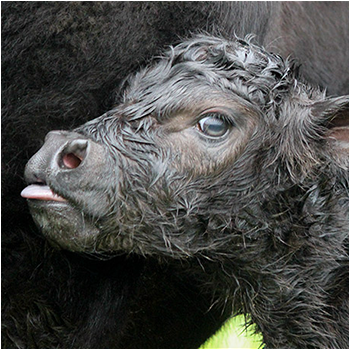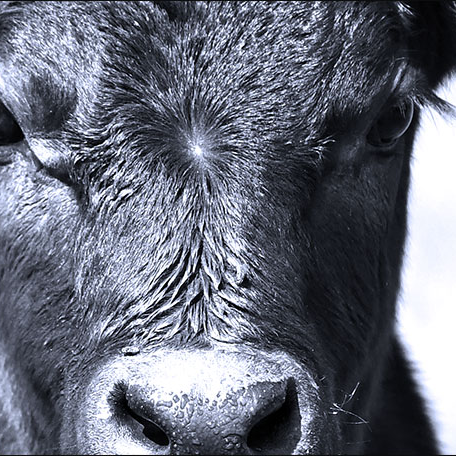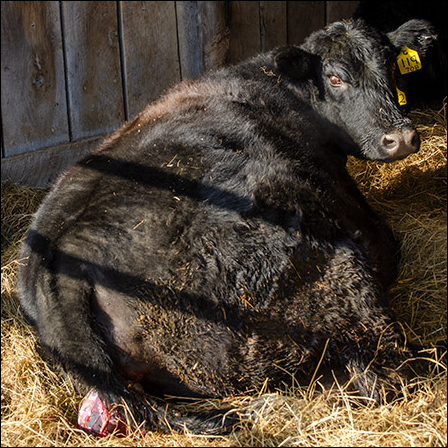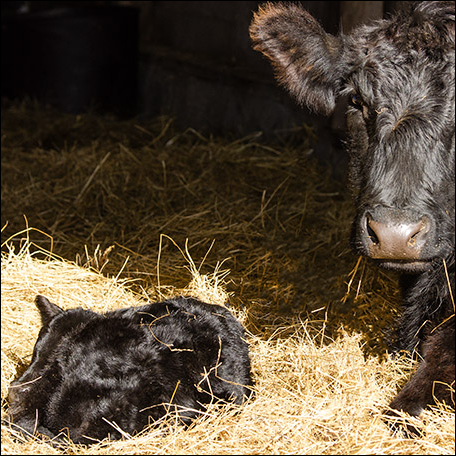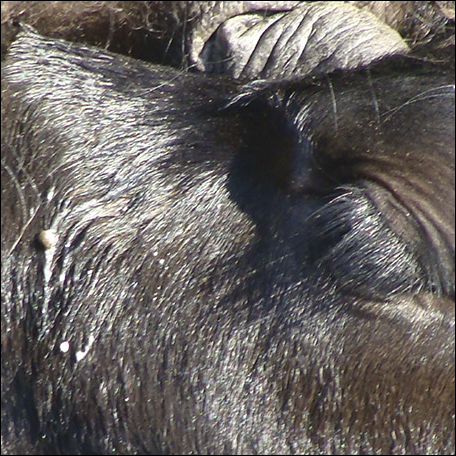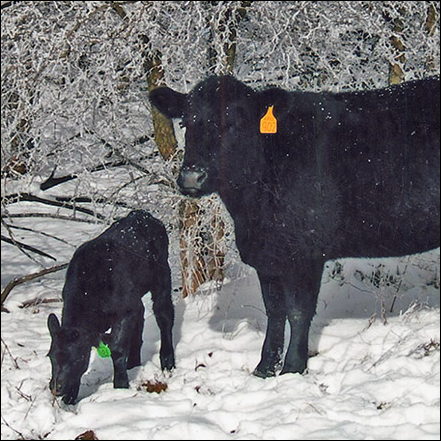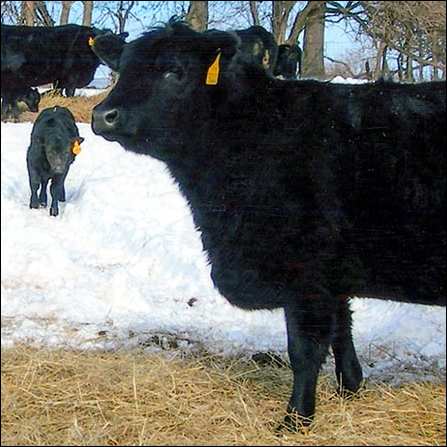Be Aware of Potentially Toxic Plants
Review the range when spring arrives.
Spring is getting closer (though it may still feel far off), and summer is not far behind. As the seasons change, it’s important to be aware of the different plants growing in your surroundings and their potential toxic effects on cattle and horses.
Common plants that cause toxicity in cattle and horses Cat Barr is the toxicologist for the Texas A&M Veterinary Medical Diagnostic Laboratory (TVMDL). Each year, she works with animal owners who need assistance identifying potentially toxic plants.
Although Texas is home to a variety of potentially toxic plant life, there are several common plants that grow across different regions of the state. For example, cocklebur seedlings grow statewide and should be a concern for cattle owners.
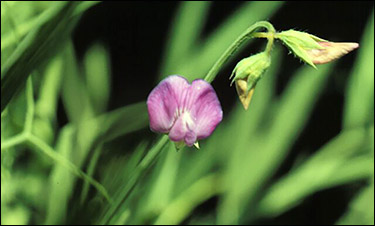 |
Austrian winter pea |
“Seedlings typically sprout around the edges of receding rain puddles,” Barr says. “They are extremely toxic at the four-leaf stage and can cause massive liver damage and rapid death when consumed. Cattle have been found dead within one hundred yards of a plant.”
Another plant of concern is singletary pea. Also called Austrian winter pea, singletary pea is mostly found in north central, northeastern and eastern Texas. Although the vegetation of the plant is not toxic, the seeds contain toxic amino acids. Singletary pea’s seeds are of most concern for horse owners. Horses tend to be the most sensitive species and, after eating, can experience neurological issues, such as stringhalt gait, which is characterized by exaggerated upward bending of the hindlimb at every stride.
Situational plant toxicosis In addition to the toxic plants that commonly grow in Texas, Barr warns of certain situations that may cause seemingly harmless plants to become toxic or more available to animals.
High winds during the spring and early summer can result in fallen tree branches. Depending on the type of tree, fallen branches can grant animals easier access to leaves that may be toxic.
Maple trees with wilting or dead leaves are known to cause drastic intravascular hemolysis in horses. This condition can result in weakness, ataxia and renal failure.
Catkins, the flowers on oak trees, and the smaller leaves on the tree have high concentrations of tannins. High tannin intake can cause liver failure in horses or capillary fragility and renal failure in cattle.
“The leaves of concern are smaller than a squirrel’s ear,” Barr says.
Forages with cyanide Producers also should be aware of the forages that contain cyanide. Cyanide can cause animals to go into respiratory distress.
Chokecherry, cherry-laurel trees and plum thickets have high concentrations of cyanogenic glycoside in their leaves. Crushing the leaves, such as when being consumed, can release cyanide. Rumen microbes break down the cyanogenic glycoside rapidly, making ruminants more sensitive than other species.
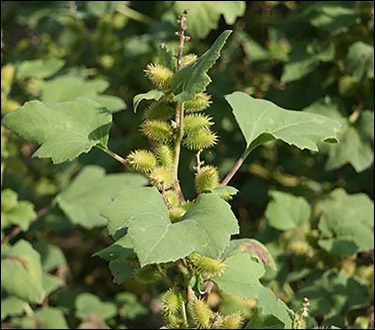 |
Cocklebur |
Sorghum forages like Johnsongrass, sudangrass and haygrazer are more frequently encountered causes of potential cyanide poisoning. The cyanogenic glycoside concentration in these grasses is highest when the plants are stressed, such as when they’re rapidly growing or under drought conditions.
“There have been instances of ruminants dying in as little as 15 minutes following ingestion of plant matter containing cyanide,” Barr says. “It’s important producers keep an eye out for fallen branches following storms. Certain tree leaves can have disastrous effects on cattle.”
How can TVMDL help? TVMDL’s analytical chemistry section offers several tests and services livestock producers and veterinarians may find beneficial.
One of the most frequently requested services is plant identification. This service allows producers or veterinarians to submit plants to the laboratory for identification and to determine their toxicity, if any. Clients have the option of mailing the plant to TVMDL or for a more convenient method, submitting photos of the plant via email or the TVMDL mobile app.
In addition to identification services, TVMDL performs tests on feed and forages, as well as rumen and gastric intestine contents to determine toxicity levels.
Those interested in these services are encouraged to set up a consultation with one of TVMDL’s veterinary diagnosticians to determine the most practical diagnostic testing route and to create a TVMDL client account.
For more information, visit TVMDL’s website or call the College Station laboratory at 1-888-646-5623.
Editor’s note: Mallory Pfeifer is a communications specialist for TVMDL. Photos courtesy Texas A&M AgriLife Extension.
